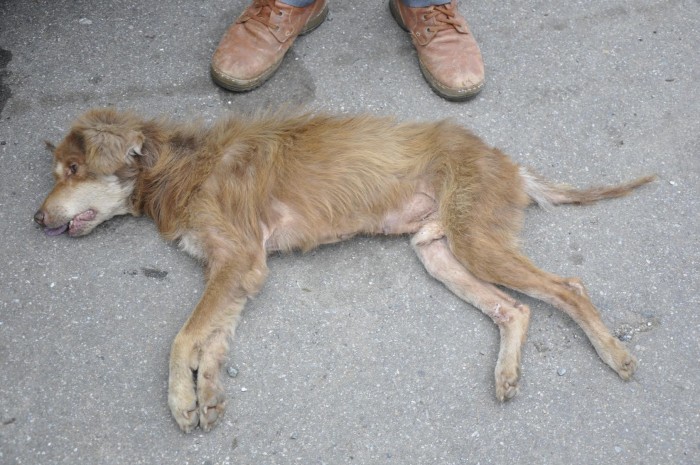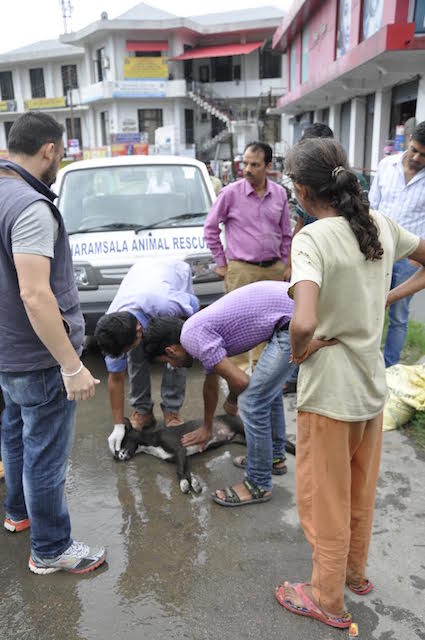In India, there are an approximated 35 million stray dogs.
Non-governmental organizations (NGOs) and animal advocates in India work to implement humane methods of population control with catch and release, spay, neuter and rabies vaccination programs. These groups also educate the community on rabies and are working to shift the mindset of community members to treat the stray animal population as a local problem that can be managed with compassion and education.
Even with such programs, and the Central Government support from Maneka Gandhi, India’s most powerful animal advocate, many people feel that the stray dogs are pests that are diseased and unwanted. Rox, one of the victims of a poisoning had just been at Dharamsala Animal Rescue recovering from a head wound. He was released back to his home on the street once he recovered, which is the legal requirement for the release of street dogs. When Kamlesh Singh Bora, Manager of Dharamsala Animal Rescue was called to rescue several sick dogs later on, he was devastated to see Rox, laying on the ground dead, along with nine other dogs.
Today, he is working to get justice for their murders.

Historically and even today, many states, cities, towns and villages in India poison dogs to control population—a cruel, inhumane and ineffectual method.
An estimated 30,000 people die per year of rabies. And 95% of the time, as a result of a dog bite. 40% of the deaths are impoverished children under 15. The World Health Organization classifies rabies as a neglected disease. Rabies is 100% preventable by vaccination, yet continues to kill. Per the WHO, vaccinating 70% of dogs breaks rabies transmission cycle in an area at risk.
~
~
Hello Sir ,I am Kamlesh, manager of Dharamsala Animal Rescue. I want to share a terrible event with you.
Today, while our team was attending cases from our mobile clinic, I received a call from a man named Baba Bedi, who was informing me of a dog who had died at the side of the road. A few minutes later he called again, to say that two more dogs were dying. Our team went immediately to the location at Charan Pul to treat them. Many people were gathered, and told us that more dogs were dying. When we went to find them, they were already dead. In total 10 dogs had been killed. All the dogs were healthy and some had been operated on to prevent puppies being born. They were vaccinated against rabies and other diseases that affect dogs.
These dogs died in great pain and suffering for no reason. In India it is illegal to harm or kill any animal, including dogs. This is stated in the Prevention of Cruelty against Animal Act 1960, which is an official Government legislation.
Killing dogs by poisoning, beating or any other method is not the solution in combating the population of stray dogs. The only way to effectively control the population is by using an animal birth control program. New dogs move into the areas where dogs have been killed and repopulate the area.
A proper waste management system also needs to implemented as the only reason the dogs are here is because of the rubbish humans leave everywhere.
Dharamsala Animal Rescue work all year round trying to control the population using animal birth control, and have already made a huge difference in the population of dogs in the Dharamsala area.
If the government and local community support and help us it will make a huge difference and will help to control the population even more.~ Kamlesh Singh Bora,
Manager of Dharamsala Animal Rescue
~
Author: Deb Jarrett
Images: Dharamsala Animal Rescue
Editor: Caitlin Oriel



Read 2 comments and reply